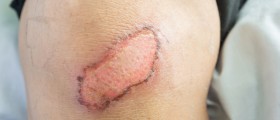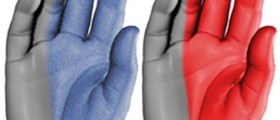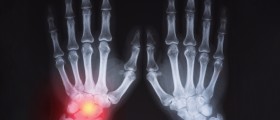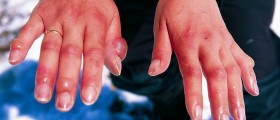
Our hands are very delicate anatomical structures and even the smallest injury can disrupt the functioning of these body parts. Therefore, you need to keep your hands safe from harm and seek medical attention even when the smallest type of damage affects them. Timely treatment can prevent the existing damage from escalating and making the problem worse.
Anatomy of the Hand
Each of our two hands consists of 27 bones, when the 8 bones in the wrist are included. So, there are many bones which can be damaged, leading to a hand injury. Add the fact that there are many muscles, ligaments, veins, arteries, nerves, tendons and joint cartilage present in the area and you will realize the complexity of the human hand and the necessity of protecting this body part from injury.
About 10% of total visits to the emergency hospital departments are due to hand injuries. Studies have shown that, in 1000 cases of hand injury, 42% are due to cuts, 27% because of bruises, 17% triggered by bone fractures and 5% caused by underlying infections. Most common injuries of the hand, therefore, are blunt traumas and lacerations.
Signs of Hand Injury
Cuts are quite obvious and, once affecting the hand area, these are considered hand injuries. Other signs of hand injuries are pain and tenderness, numbness, bleeding, motor dysfunction, weakness and paleness affecting the hand.
If a fracture is the cause of the injury, deformity, tenderness, discoloration, swelling, motion incapability, bleeding, fatigue or numbness, all can affect the hand in question. This is a serious type of hand injuries and demands immediate medical assistance. Soft tissue injuries and amputations will have the same symptoms. Therefore, it is important to have both of these injuries treated timely, preventing the situation from going from bad to worse.
When infections strike, the hand area is bound to be warm and tender to the touch, appearing red and swelling. In some cases, the sufferer may develop a fever. Furthermore, deformities in the hand anatomy as well as motion reduction both may take place due to an infection in the area.
If you have burn your hands, extreme tenderness or complete numbness may be one of the main symptoms, along with deformities, discolorations, tissue loss and alternations in the texture of the skin, redness and appearance of blisters.
Treating Hand Injuries
If you experience any of the above mentioned symptoms or get exposed to any of the causes, you are advised to seek medical assistance. Even the tiniest cuts can evolve into life-threatening infections. Therefore, do not ignore the injuries your hand has suffered. Rather, seek timely treatment.
Finally, make sure you apply safety measures while you operate dangerous devices or tools, keeping your hands protected from possible injuries.

















Your thoughts on this
Loading...